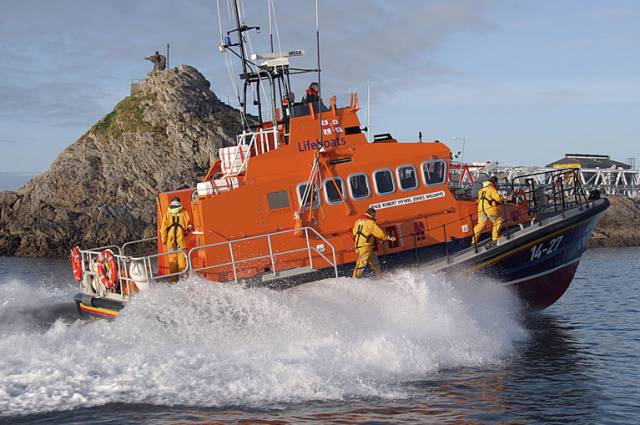Fenit and Kilrush RNLI were involved in a major multi-agency search and rescue operation last night for a windsurfer who was missing at sea for seven hours.
Fenit RNLI was requested to launch their all-weather lifeboat at 5.34pm yesterday evening (Sunday 11 November) following initial reports from the Irish Coast Guard that there was a person reported overdue off the Ballybunion coast in County Kerry.
The alarm had been raised after the windsurfer who was last seen at approximately 4pm, had not returned to shore.
The all-weather lifeboat under Coxswain Tony Stack launched immediately and the volunteer crew made their way to the scene.
The Irish Coast Guard helicopter, Rescue 115 from Shannon was also tasked along with the Irish Naval vessel, the Le Niamh, which was in the area at the time. The inshore lifeboat from Kilrush RNLI was subsequently requested to launch and join the search.
Weather conditions at the time were blowing Force 6-7 and there were 3m swells. Despite it being dark, visibility was good for searching.
The search continued until approximately 11pm when news came that the windsurfer had managed to make it ashore and raise the alarm with a member of the public. He was subsequently transferred by ambulance to University Hospital Limerick. The windsurfer had managed to travel by sea the 25 nautical miles from Ballybunion in County Kerry to Kilkee in County Clare.
Speaking following the call out, Charlie Glynn, Kilrush RNLI crew member and Lifeboat Press Officer said: ‘This is such good news this morning and we are delighted that after the windsurfer was missing for so long yesterday evening, that this man is alive. While we don’t have the details from the casualty’s perspective, he had to have been an experienced windsurfer who was wearing the correct clothing and gear and who knew what to do when he got into difficulty. He stayed with his board and managed somehow to travel the long distance to shore. All in the RNLI wish him well for a full and speedy recovery following what must have been a frightening experience for him.
‘We would remind everyone taking to the sea to always respect the water. Always carry a means for calling for help, such as a personal locator beacon, especially if you are on your own, it could be a lifesaver. Always tell someone you are going out and when you will be back. Make sure they know where you are sailing and who to call if you are not back in time.’































































